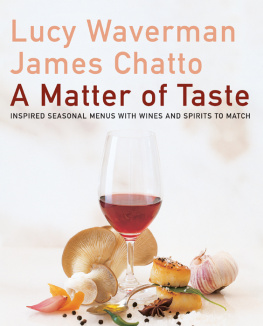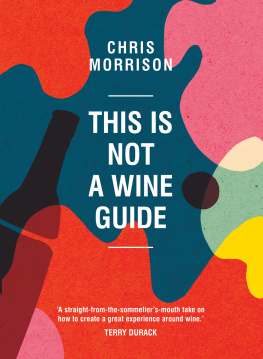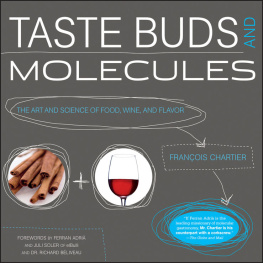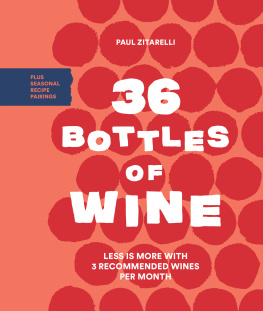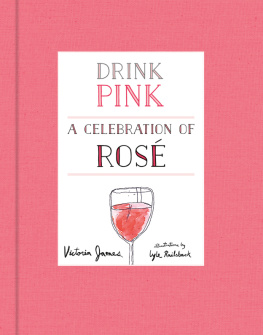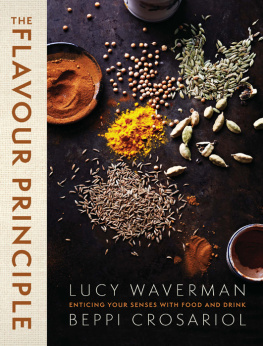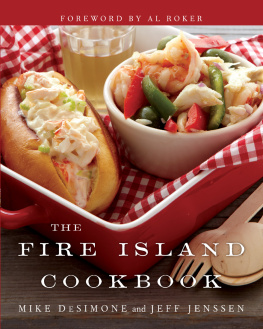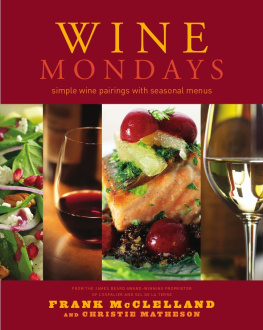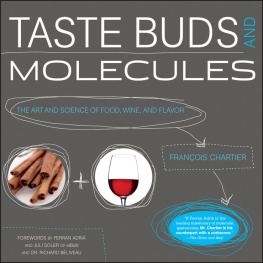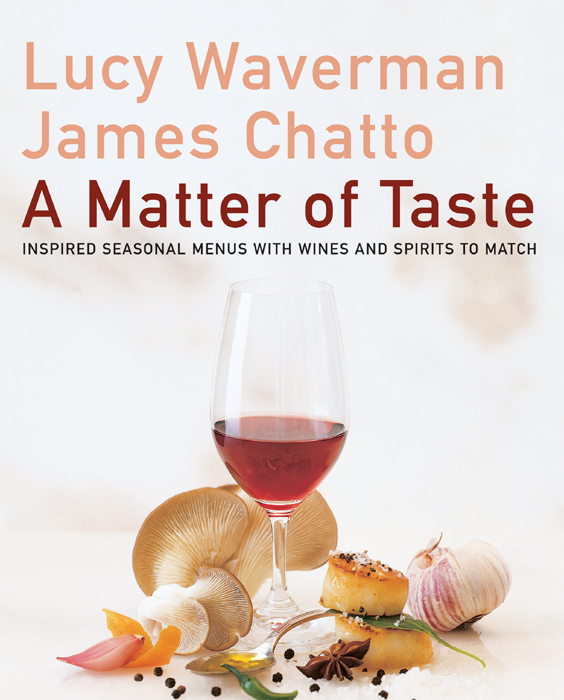THIS IS A BOOK ABOUT PLEASURE the pleasure we find in cooking and eating wonderful food paired with well-chosen wines and spirits. It might be the seductive rendezvous of slow-roasted shoulder and rack of lamb with a dashing Italian cult red Sagrantino. It could be the way a juicy fillet of cod with Romesco sauce dances so elegantly with a fragrant, fruity Spanish rosado.
When the dish and the drink are truly in harmony, the result far surpasses the sum of the parts.
We have discussed these matters many times over the past ten years, sitting side by side at Food & Drink magazines editorial meetings, braiding ideas about menus and recipes with wines and cocktails, spirits and beers. We often talked about writing a book together. When the magazine received two nominations as Best Food Magazine and Best Drink Magazine at the 2003 Jacobs Creek World Food Media Awards in Australia, we felt the time had come.
But what sort of book would it be?
Our first decision was to use the seasons as a frame. Lucys cooking has always been profoundly inspired by seasonal ingredients and by the different ways in which we think about food from one time of year to another. The same is true of wines and cocktails. Some drinks are perfect for winter evenings curled up by the fire; others only come into their own on a hot summers day.
Within each season, Lucys menus run the gamut from sophisticated dinner parties to hearty family feasts to quick and easy midweek meals. Some reflect traditional celebrations like Thanksgiving, New Years Eve or a family brunch; others have more unexpected themesa wine-tasting shower, a book club gathering, a dinner with a theme of lemons. James finds wine or spirits matches for every course as well as before-dinner cocktails, aperitifs and occasional suggestions for something delicious to sip after the guests have gone. All sorts of careful harmonies run through the matched menus, but the individual recipes and wine pairings also work beautifully on their own. We urge you to play around with them. Take charge! Experiment! Put your favorite recipes together to create menus that suit your own taste.
The index may be a handy part of that exercise; we hope it will also serve as a more general tool when you want to match food and drink. If youre blessed with a bumper crop of tomatoes, for instance, use the index to find all of Lucys tomato recipes; each one comes with suggested wine pairings. Or turn the whole process around and start from the wines point of view. If you find yourself with a gorgeous bottle of British Columbian Chardonnay and want to cook something to flatter the wine, seek it out in the index and check out the recipes we feel it matches.
Another important criterion was to write a book that people could actually read. Stirred in among the menus are Food Tech tips on cooking techniques and ingredients, short essays on different aspects of wine and spirits and the tall tales that lie behind every cocktail worth its salt. We offer no apology if they sometimes sound a tad opinionated: eating and drinking is a very personal business! So, Lucys recipes reflect her passion for pears and ginger, green vegetables and fish, and also her love of food that is simple, organic, easy to prepare and vibrant with flavor. Meanwhile, James indulges his affection for whisky and fortified wines, devises cocktails to showcase his beloved Plymouth gin, but cruelly neglects vodka. Beer, too, is conspicuous by its absencea subject so rich and varied that it deserves a volume of its own.
Every close relationship has its ups and downs. In the course of planning this book we fought and argued, sulked, laughed but always came to terms in the end, finding food and drink matches that delighted us both. Some of them may seem unconventional, such as single malt Scotch served straight from the freezer to accompany Lucys delectable Triple Chocolate Truffle Tart, but we urge you to try them. And, yes, there were times when challenges led to compromise. Lucy reluctantly cut back on the tartly dressed salad garnishes that she likes to serve with some appetizers (wine is too easily unmanned by a vinaigrette). But she insisted on keeping her gorgeous soups (notoriously tricky matches for vino), forcing James to rise to the occasion with such pairings as chilled dry vermouth for Scallop and Fennel Soup.
A cookbook, a food book, a primer on wine and spirits, an introduction to the casual art of bringing all these elements together, this book is first and foremost a personal celebration of the things we most love to eat and drink.
LUCY WAVERMAN JAMES CHATTO
June 2004
FOR ME, FOOD IS A PASSION. I love to prepare it, eat it and share it with my family and friends. Taste, of course, is always paramount, and I believe the best taste comes from using high-quality, seasonal ingredients and preparing them simply and properly. Recipes do not need to be complicated, expensive, time-consuming or rigid. Most of the recipes in this book are forgiving, and many can be made ahead. We all taste differently, so trust your own palate, adapt or vary the recipes according to your own tastes and adjust seasonings as you see fit, especially at the end of the cooking.
Some things do, however, make a real difference in cooking. Here are some of the most important ingredients and equipment that I believe truly affect the quality of the end result.
Organic Ingredients A growing number of consumers today are buying organic foods. For reasons of health and flavor, I try to buy naturally raised or organic meat and poultry and organic fruits and vegetables. Now most supermarkets have an organic section; there are also home delivery companies that will deliver organic foods to your door.
Stock The quality of a finished dish is often directly related to the quality of the stock used in it. I find it very therapeutic to make my own stock. To make chicken stock, for instance, follow the recipe for chicken soup (page 64), but use lots of bones instead of a whole chicken. If you shudder at the thought of making your own stock, look for the many excellent storebought stocks that are available. Buy low-salt products if possible, because stock is often reduced down in recipes, intensifying the saltiness. I like the stock sold in Tetra Paks, especially the organic versions, and I always read the labels. If you are buying chicken stock, for example, make sure that chicken is the first ingredient listed and look for stocks that do not contain MSG. Good-quality beef, veal and chicken stock are often available frozen at butcher shops.
Butter I use unsalted butter in cooking. The water content is lower than that of salted butter, making it better for baking and cooking, and I prefer the taste. Unsalted butter can also be heated to a higher temperature without burning.

